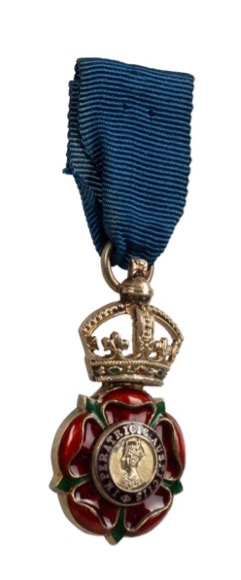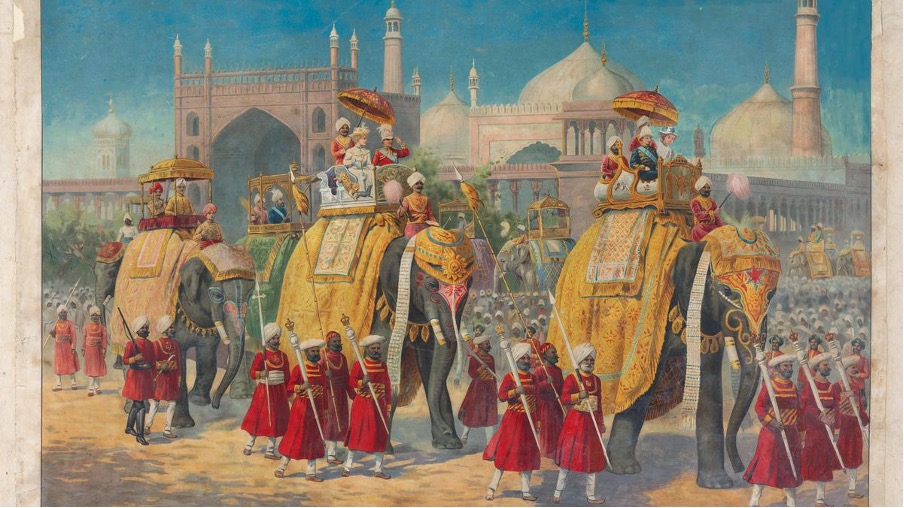An exhibition at DAG and a new book give us a ringside view of the historic Delhi Durbars. Curated by noted historians Rana Safvi and Swapna Liddle, DAG also launched a book, Delhi Durbar: Empire, Display and the Possession of History, co-authored by the duo
In an important contribution to a facet of Delhi’s rich history, DAG is hosting an exhibition drawn from its archives of the city’s resplendent Durbars. Curated by noted historians Rana Safvi and Swapna Liddle, DAG also launched a book, Delhi Durbar: Empire, Display and the Possession of History, co-authored by the duo.
During the period of the Raj, the British held three great ceremonial Durbars in Delhi. The first, in 1877, was staged to declare Queen Victoria as Empress of India. The second, in 1903, proclaimed the succession of her son King Edward VII as King Emperor. The third, in 1911, proclaimed King George V, and on this occasion both the King and his consort, Queen Mary, attended in person, marking the first time a ruling British monarch had visited India. The pomp and ceremony of these events were on a lavish scale, to display the majesty and power of the Raj, and the loyalty of eminent Indian subjects, including Maharajas and Nawabs of the Princely States.
 Companion of the Most Eminent Order of the Indian Empire | Photo Credit: Wikipedia
Companion of the Most Eminent Order of the Indian Empire | Photo Credit: Wikipedia
DAG invited leading historians of Delhi, Swapna Liddle and Rana Safvi, to explore our archives collection. The items they found there include numerous photographs of the three Durbars, taken by prominent photographers of the day. They also include many other objects relating to the Durbars, from portraits and medals to maps and official guidebooks, and to tickets and programmes. Historians in the past have analysed the ideology of the Delhi Durbars, but never before has such a collection of the material culture of these events been brought together for display.
 Historian Rana Safvi | Photo Credit: Wikipedia
Historian Rana Safvi | Photo Credit: Wikipedia
The visual imagery of the Durbars drew heavily on the heritage of the city: on the Mughal courtly ceremony of the past—as the very name ‘Durbar’ indicates—as well as the stately architecture of the Mughal and Sultanate periods. Delhi had also, of course, been the scene of some of the bloodiest conflict during the Uprising of 1857, and the first of the Durbars was held in Delhi just twenty years later, partly as a gesture of reconciliation and healing. Consequently, our exhibition begins with a ‘darshan’ of the great monuments of the city, as seen in paintings, photographs and postcards of the time, and then includes images of Delhi in 1857, before proceeding to the three imperial Durbars in turn.
While all three Durbars were unique, there was a thread of continuity. They were all held in the Coronation Park in Delhi and close to the Ridge where the British had fought the Indian forces in the Uprising of 1857. [They] appropriated some Mughal symbols in a bid for continuity and so that Indians could relate to them.
The first Durbar, was called the Imperial Assemblage and was meant to announce the assumption of the title of Kaiser-e-Hind by Queen Victoria with pomp and splendour. It was also meant to legitimise and popularise British rule, using many of the idioms of the Mughal empire, including the word ‘Durbar’, which Indians were familiar with.
The second, held in 1903, was to celebrate the coronation of King Edward VII. This Durbar envisaged by the viceroy Lord Curzon was a grandiose event with the viceroy and 48 Indian princes riding on elephants through the city in a ceremonial procession. An art exhibition was conceived by Lord Curzon, in his own words, to ‘show that India can still imagine and create, and do’.
The third Durbar of 1911 was the first in which the British monarch himself was present with his consort Queen Mary. It announced the reversal of the highly unpopular partition of Bengal and was also used to announce the shifting of the imperial capital in India from Calcutta to Delhi.
The British Delhi Durbars have been the subject of much recent scholarly study and re-evaluation. The objects in this exhibition bring the Delhi Durbars materially present, through works by some of the leading artists and photographers of the period.’ – The Director’s Note, Delhi Durbar
Read Also:
Ganesha With a Touch of Batik by Hyderabad-based Artist Yasala Prakash

Contributor





